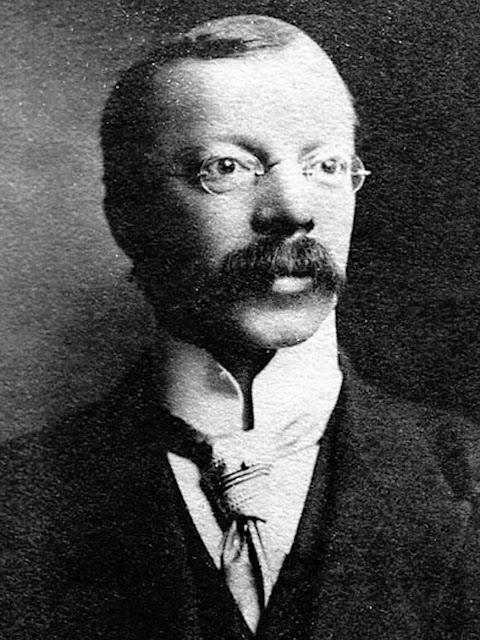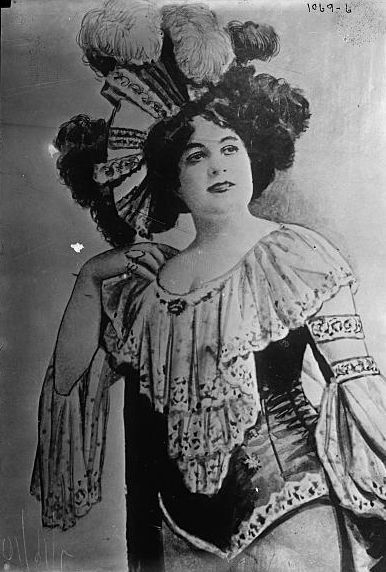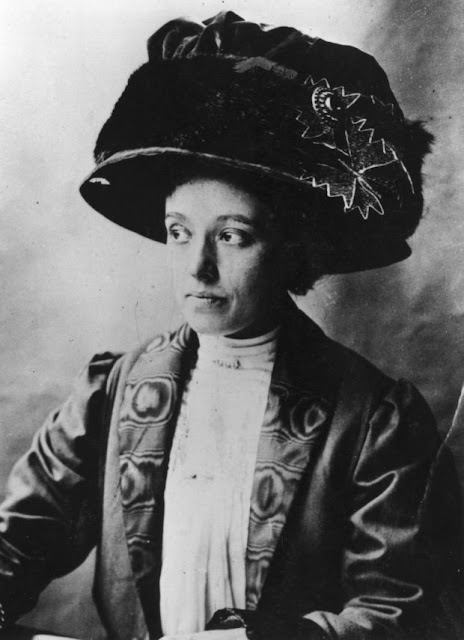Hello everyone!
Today I will look at another historic true crime tale. So sit back as I recount the enigmatic case of Dr Crippen; a case that has puzzled investigators for over a century.
In the annals of criminal history, there are cases that captivate the public's imagination, leaving behind a trail of mystery and intrigue. One such case is that of Dr Crippen, a seemingly ordinary man whose life took a dark turn. Dr Crippen's name has become synonymous with mystery and infamy.
 |
| Dr Crippen |
Watch the YouTube video: The Enigmatic Case of Dr Crippen
In the early 20th century, a chilling mystery captivated the world. It all began with the sudden and unexplained disappearance of a woman named Cora Crippen. This enigmatic woman vanished without a trace, leaving behind a trail of unanswered questions and speculation. Who was Cora Crippen? What led to her sudden vanishing?
She was the wife of Dr Crippen, a seemingly ordinary man living in London. But as the investigation unfolded, it became clear that there was much more to this case than meets the eye. The circumstances surrounding Cora's disappearance were shrouded in secrecy, leaving everyone wondering what truly happened to her.
To understand the mysterious case of Dr Crippen, we must first delve into his life and career. Born in 1862 in Coldwater, Michigan, Hawley Harvey became an American Doctor after studying at the Homoeopathic hospital college of Cleveland. After graduation, he moved to New York and married Charlotte Bell, a student nurse. She bore him a son, and they were about to have a second child when she died of a stroke in early 1890. Six months later, Crippen met 19-year-old Cora Turner. They married in the fall of 1892. However, his ambitions led him to London, where he hoped to make a name for himself in the thriving medical community.
Now let's delve into the life of Cora Crippen herself. Born Kunigunde Mackamotzki in Germany, she assumed the simpler name Cora Turner. Later she also adopted the stage name Belle Elmore and pursued a career as a music hall singer. Crippen and his wife Cora settled in London in 1890, where he worked for a patent medicine company at Albion House, New Oxford Street. In the late summer of 1905, the Crippens moved from their West End home to the more run-down area of Tufnell Park, buying a semi-detached house at 39 Hilldrop Crescent. With her captivating performances and striking beauty, Cora became a prominent figure in London's entertainment scene. Cora's life was marked by tumultuous relationships and a constant desire for fame and fortune. She has been described as a blowsy, heavy-drinking nightmare, vain, bullying, and promiscuous. She had taken a few lovers, and they showered her with gifts and money. One of her lovers was much younger than her and was entertained a few times in front of her humiliated husband. It was around this time that Dr Crippen started an affair with his typist Ethel le Neve, who had worked for him since 1903.
 |
| Cora Crippen aka Belle Elmore |
After a house party on the 31st of January, 1910, Cora seemingly vanished without a trace. Friends and neighbours grew concerned as days turned into weeks with no sign of her. Rumours started to circulate, and suspicion fell upon Dr Crippen. What could have happened to Cora? Was foul play involved? Was it a carefully orchestrated plan or a sudden twist of fate?
Her husband said she had returned to the United States. Later, he said she had died in America. Crippen told friends that his wife had passed away of natural causes. However, when Ethel was seen wearing Cora’s jewellery before moving in with her lover by the end of February, suspicions began to surface.
As the mysterious disappearance of Cora Crippen sent shockwaves through the community, investigators wasted no time in launching a thorough investigation. Every lead was meticulously followed, every clue scrutinised for any hint of her whereabouts. The search for answers led detectives down a labyrinth of secrets and suspicions, as they pieced together the puzzle of Cora's vanishing act. From interviewing witnesses to examining her personal belongings, no stone was left unturned.
Suspicion fell upon Dr Crippen himself, as his behaviour raised eyebrows and his alibis seemed questionable. The search for answers led authorities to examine the couple's home, where they discovered a hidden cellar filled with unsettling evidence. Among the findings were personal belongings of Cora, suggesting that she may have never left the house alive.
After weeks of meticulous investigation, the moment of truth finally arrived. As investigators continued their search through Dr Crippen's home, they stumbled upon a chilling discovery. Hidden away in the depths of the cellar, they uncovered the remains of a human body. The atmosphere was heavy as forensic experts carefully examined the grim find. Through scientific analysis and painstaking examination, it was determined that the body belonged to none other than Dr Crippen's wife, Cora. The revelation sent waves of horror and disbelief throughout the nation. How could a man who appeared so ordinary be capable of such a heinous act? The shocking discovery in the cellar marked a turning point in the investigation, leading to even more questions and a deeper dive into the twisted mind of Dr Crippen.
Additionally, forensic analysis revealed traces of the toxic substance Hyoscine in the remains found on the premises. These discoveries only deepened the mystery, leaving investigators eager to piece together the puzzle and find out what truly happened to Cora Crippen.
As the investigation unfolded, one name emerged as a key figure in the case - Ethel Le Neve. Ethel was a young typist who worked for Dr Crippen and had become his mistress. It was during this time that Dr Crippen's wife, Cora, went missing under suspicious circumstances. This led to growing suspicions about the nature of Dr Crippen and Ethel's relationship.
 |
| Ethel Le Neve |
With growing suspicions surrounding the disappearance of Dr Crippen's wife, Cora, the case caught the attention of Scotland Yard - the renowned British police force. Known for their expertise in solving complex crimes, Scotland Yard took charge of the investigation, determined to uncover the truth. Led by Chief Inspector Walter Dew, the team meticulously combed through evidence, interviewed witnesses, and followed every lead. As the investigation unfolded, incredible details emerged, painting a chilling picture of Dr Crippen's actions. The relentless pursuit of justice by Scotland Yard would soon bring the truth to light, revealing a dark and disturbing tale.
As suspicion grew around Dr Crippen's involvement in the disappearance of his wife Cora, a transatlantic pursuit began to bring him to justice. News of the mysterious case spread like wildfire, capturing the attention of law enforcement agencies on both sides of the Atlantic. The chase was on. In a daring move, Chief Inspector Walter Dew boarded the SS Montrose, a passenger ship bound for Canada, where he believed Dr Crippen and his lover Ethel Le Neve were attempting to escape. Dew's hunch paid off when he identified the fugitives aboard the ship. With nerves of steel, he discreetly sent a wireless message back to Scotland Yard, alerting them of his findings. The stage was set for a dramatic arrest upon the ship's arrival in Canada. Crippen shaved off his distinctive moustache and called himself Mr Robinson. Ethel, on the other hand, was disguised as his sixteen-year-old son, John.
After months of investigation, the case of Cora Crippen finally reached the courtroom, setting the stage for a dramatic and highly publicised trial. The prosecution presented a compelling case against Dr Hawley Crippen, alleging that he was responsible for his wife's disappearance and likely murder. The courtroom was filled with tension as witnesses took the stand, sharing their accounts of suspicious behaviour and incriminating evidence. The defence, however, fought back vigorously, challenging the credibility of the prosecution's case and presenting alternative theories. The trial became a battle of wits and emotions, captivating the public's attention and fueling intense speculation.
Witnesses came forward with disturbing testimonies, revealing a darker side to the accused. They spoke of his volatile temper, history of violence, and obsession with control. These revelations painted a chilling portrait of a man capable of unspeakable acts. Furthermore, forensic evidence uncovered during the investigation provided undeniable proof of Dr Crippen's guilt.
With each passing day, the enigmatic case of Dr Crippen unfolded in the courtroom, revealing shocking details and raising profound questions about the nature of justice. Ultimately, the fate of Dr Crippen would be decided by the jury, who held the power to deliver justice or acquittal. The trial would prove to be a pivotal moment in this captivating case, forever etching its place in history.
After weeks of intense scrutiny and compelling evidence, the trial of Dr Crippen finally reached its climax. The verdict, when it came, sent shockwaves through the nation. Dr Crippen was found guilty of murder and sentenced to death by hanging. But even after his conviction, questions lingered about the true nature of his crimes and the motivations behind them. Dr Crippen was executed on the 23rd of November at 9 am in Pentonville Prison.
After the trial, the case of Dr Crippen left a lasting impact on society, creating a legacy of infamy and controversy. The sensational nature of the crime and the subsequent trial had captured the public's imagination, leading to widespread discussions and debates. People were fascinated by the sinister details of the case and the insights it provided into the mind of a killer. The media coverage surrounding Dr Crippen's trial further fueled public interest, making him a household name. However, the legacy of Dr Crippen is not without its controversies. Some argue that he was wrongly convicted, pointing to inconsistencies in the evidence and flaws in the legal process. Others believe that justice was served and that Dr Crippen deserved his fate. Regardless of where one stands on the matter, there is no denying the lasting impact this notorious crime has had on criminal history and public perception of murderers.
The legacy of this case extends far beyond the courtroom walls. It marked a turning point in forensic science, as the use of DNA fingerprint analysis played a crucial role in securing the conviction. This groundbreaking method of identification would go on to revolutionise criminal investigations worldwide. Dr Crippen was also the first person to be caught using the wireless telegraph. The enigmatic case of Dr Crippen continues to captivate the public's imagination, inspiring countless books, movies, and documentaries.
In 2007, tests compared DNA from the remains to samples from Mrs Crippen’s living relatives and found no match. Lead scientist David Foran said that based on genealogical and DNA research, the tissue used to convict Dr Crippen was not that of Cora. Additionally, further DNA testing showed the tissue was male.
 | |
| Alleged scar tissue used in evidence at the trial, claimed to be that of Cora Crippen |
However, in December 2009, the UK's Criminal Cases Review Commission, declared that the Court of Appeal will not hear the case to pardon Crippen posthumously.
While debates and controversies surround Dr Crippen's guilt or innocence, there is no denying the lasting imprint this case has left on criminal history.
Do you think justice was served in this case? Leave a comment and let me know.
If you enjoyed this article, subscribe to True Crime Tales with Cosette YouTube channel.
Talk to you soon!
